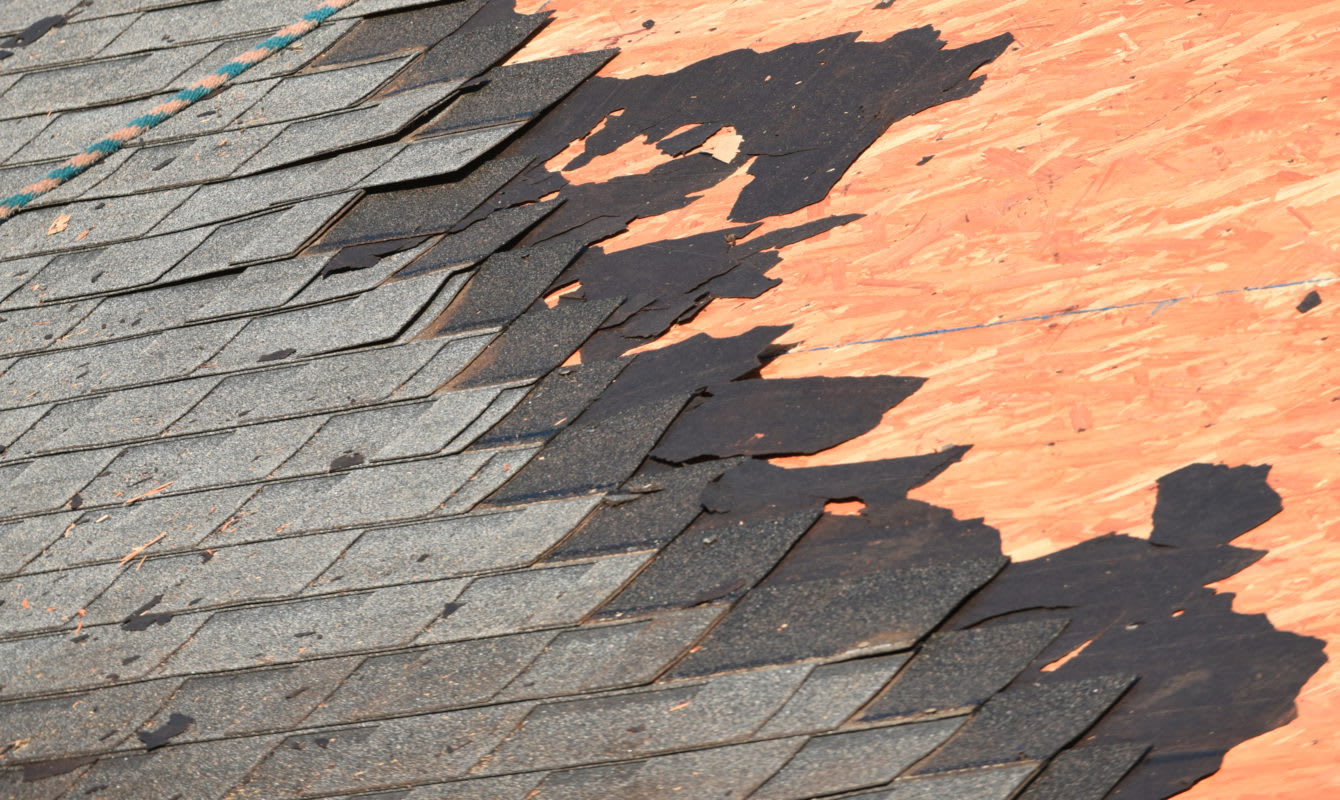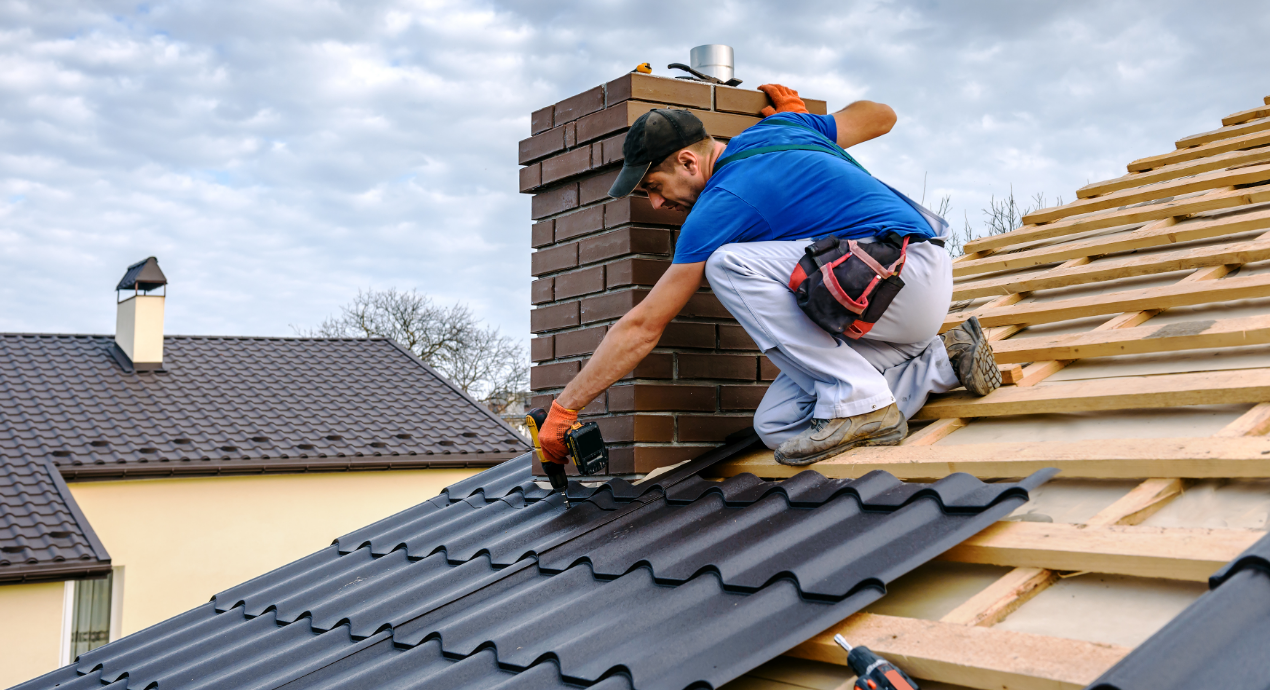Roofers Oahu: Competent Specialists for Roof Installations and Fixes
Roofers Oahu: Competent Specialists for Roof Installations and Fixes
Blog Article
Discovering the Numerous Sorts Of Roofings: Which One Is Finest for Your Home?
When thinking about the myriad kinds of roof coverings available, it is essential to examine how each choice lines up with your home's one-of-a-kind requirements, including environment problems, visual choices, and architectural functionality. From the timeless gable roofing system that efficiently channels rain to the contemporary level roofing offering metropolitan adaptability, each design presents unique advantages and obstacles.
Saddleback Roof
Gable roofs, characterized by their triangular shape and sloping sides, are a popular choice amongst homeowners seeking both aesthetic allure and performance. This roof design effectively allows for reliable water drainage, minimizing the threat of water merging and subsequent damage. Additionally, the high inclines create ample attic room area, which can be utilized for storage space or perhaps exchanged living areas.
One of the key advantages of gable roofs is their capacity to stand up to severe weather problems. The layout assists in minimizing wind resistance, making them specifically appropriate for locations susceptible to tornados. Furthermore, saddleback roofs can be created using a range of materials, consisting of roof shingles, floor tiles, and metal, giving home owners with versatility in design and budget plan.
From a building point of view, gable roofs can improve the visual charm of a home, offering a classic and classic appearance. In general, gable roofings stay a popular alternative due to their balance of practicality and style, appealing to a wide array of house owners.
Apartment Roofs
While usually forgotten for more traditional roofing system styles, flat roofings offer unique benefits that deal with specific architectural requirements and contemporary design preferences. These roofings are defined by their very little pitch, enabling effective use of space, particularly in city atmospheres where maximizing square footage is essential.
One substantial advantage of level roofings is their adaptability. They can be used as extra living spaces, such as rooftop yards, outdoor patios, or photovoltaic panel installations, improving the performance of a home. Moreover, flat roofing systems are generally much easier and much safer to browse during maintenance, assisting in fixings and assessments without the difficulties posed by steep slopes.
Flat roof coverings can likewise be more affordable in regards to materials and installment. With an easier layout, they typically require less resources, equating into reduced labor costs. Nevertheless, it's crucial to consider drain and waterproofing, as flat roofings can be vulnerable to pooling water if not appropriately developed.

Hip Roofs
Hip roofing systems stand apart for their sophisticated layout and structural stability, making them a popular selection amongst homeowners. Characterized by slopes on all 4 sides, hip roofings give a healthy aesthetic that complements various architectural designs - roof repair oahu. The balanced nature of these roofs helps to disperse weight evenly, enhancing stability and toughness
Among the essential benefits of hip roofing systems is their capability to stand up to harsh climate condition. The sloped surface areas promote reliable water drain and snow drainage, decreasing the threat of leaks and architectural damages. Furthermore, the layout decreases wind resistance, making hip roof coverings much less at risk to wind uplift contrasted to various other roofing system kinds.


Dropped Roof Coverings
Dropped roofing systems, unlike the complexity of hip roofs, provide a minimal and streamlined layout that appeals to modern aesthetic appeals. Defined by a single sloping surface area, dropped roof coverings are typically made use of in contemporary style, garden sheds, and other functional structures. This simpleness not only improves aesthetic charm however additionally enables reliable water runoff, making them appropriate for numerous environments.
Among the key advantages of shed roofing systems is their cost-effectiveness. With less materials required and an uncomplicated installment process, property owners can conserve both time and cash. The style additionally allows the incorporation of large windows or skylights, promoting all-natural light and creating large insides.
Nonetheless, it is important to think about the potential drawbacks, including limited insulation options and the need for careful design to stay clear of excessive warm accumulation. Furthermore, dropped roofings might not blend seamlessly with conventional architecture, which could be a concern for some homeowners.
Ultimately, shed roofs provide a trendy and useful roofing solution for those seeking modernity and performance. When selecting a roof covering type, reviewing individual functional needs and aesthetic preferences will certainly guide homeowners to the most effective choice for their special needs.
Mansard Roofs
Mansard roof coverings, defined by their distinctive four-sided layout, are a characteristic of French style that incorporates elegance with capability. This building style includes two inclines on each side, with the lower incline being see post steeper than the upper one. The one-of-a-kind setup allows for added living room in the top levels, making it an optimal choice for house owners seeking to take full advantage of usable area without expanding the structure's footprint.
Among the substantial benefits of a mansard roof covering is its adaptability. It can be adapted to different building styles, from traditional to modern, improving the visual appeal of any kind of home. Additionally, the adequate room produced under the roof can conveniently fit dormer home windows, which enable natural light and ventilation, more improving the convenience of the living location.
Nonetheless, potential property owners ought to think about the maintenance needs associated with mansard roofing systems. Installation costs may be greater contrasted to simpler roofing layouts due weblink to the complexity of construction.
Conclusion
To conclude, the option of an ideal roofing system type depends upon specific requirements, climate factors to consider, and visual choices. Each roof covering design provides distinct advantages, such as the performance of gable roofs, the contemporary appeal of shed roof coverings, and the security of hip roofing systems. Additionally, level roofs provide functionality for visit this site metropolitan environments, while mansard roof coverings supply additional living space despite greater setup costs. Inevitably, a detailed examination of these elements will certainly assist home owners in making an educated decision.
From the traditional gable roof covering that efficiently networks rain to the modern-day flat roof covering offering urban flexibility, each style offers unique advantages and challenges (roof repair oahu). Additionally, the design decreases wind resistance, making hip roof coverings much less vulnerable to wind uplift compared to other roof kinds
Shed roof coverings, in contrast to the intricacy of hip roofs, offer a structured and minimal layout that charms to modern-day appearances. Each roof style offers one-of-a-kind benefits, such as the effectiveness of gable roofs, the modern-day charm of shed roof coverings, and the security of hip roof coverings. Level roofs supply usefulness for city settings, while mansard roofs provide additional living space despite greater installment prices.
Report this page